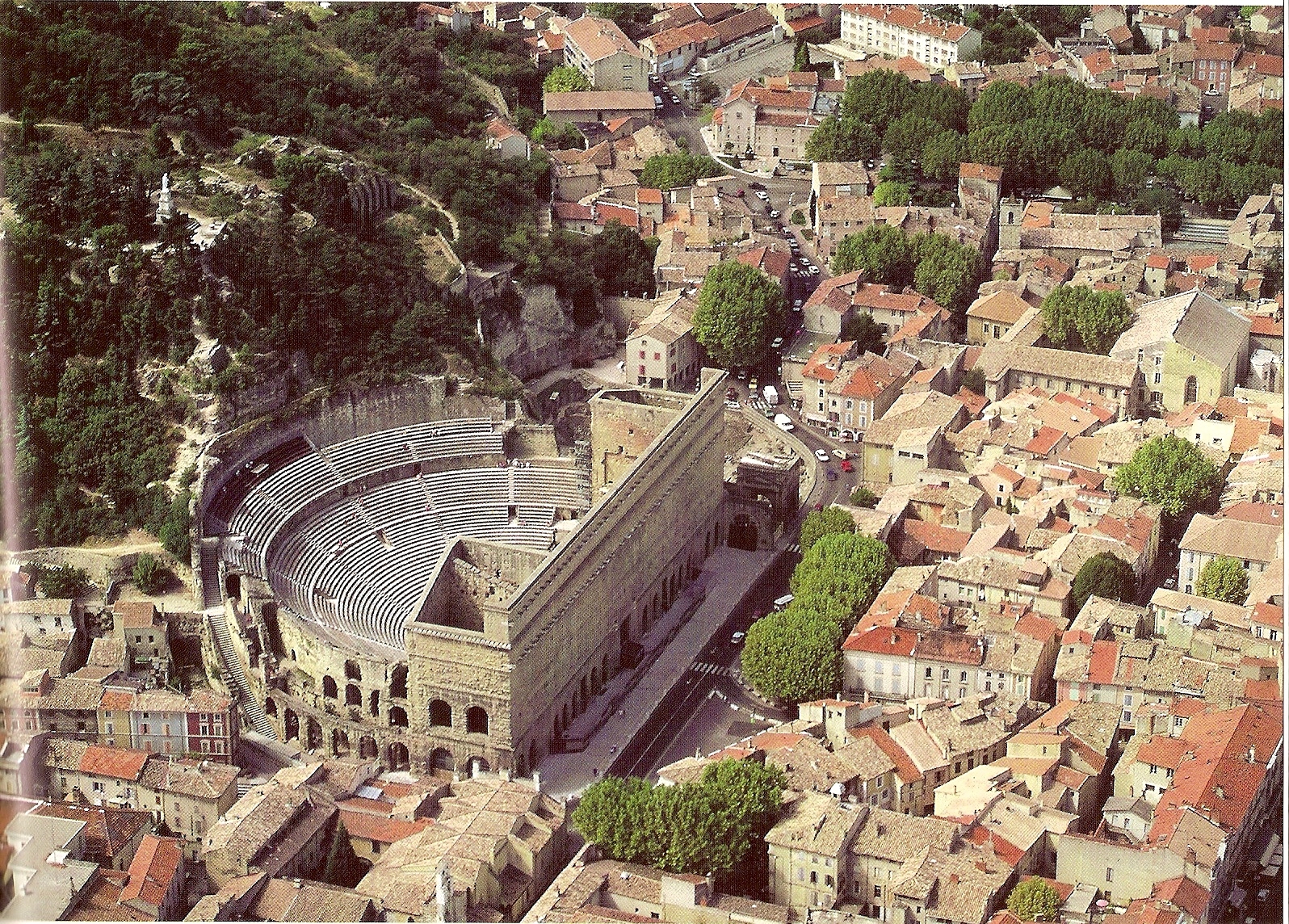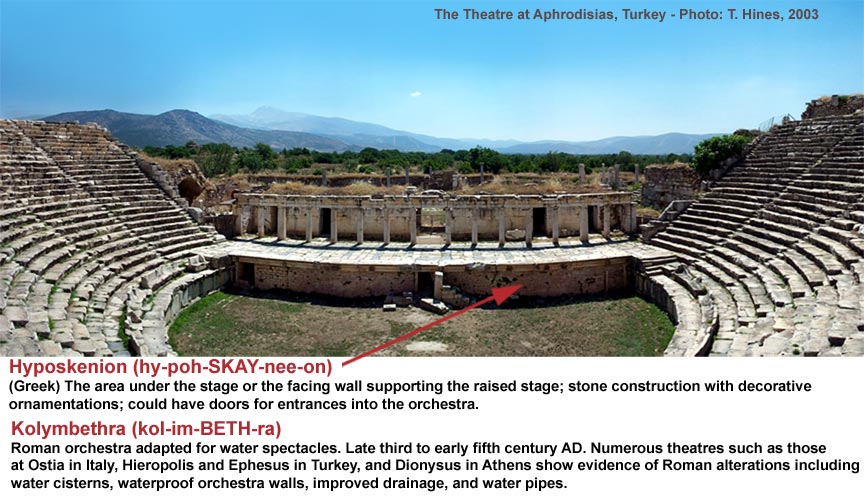
Till
1st century AD
The roman theaters are a combination of Italian and Hellenistic features. The theaters in the capital were built on flat ground.

The
orchestra
losts its importance, so the actors and the viewers came closer.
The
semi-circle surface which was in front of the koilon (namely the rest
of the
old orchestra) was used for the placement of the honorable seats. The
side
entrances (parodoi) gained a domical roof and were filled with seats.
At the
highest spot of the koilon a domical stoa and a small temple was
erected. The proscenium became lower and the logion
had a bigger focus. Also a big curtain was used, the aulaeum.
Next to the skene the paraskinia existed and behind the skene
help rooms for the actors
existed, the postscaenium. A stoa
also behind the skene, the porticus post scaenam,, was used by the
spectators
in the intermissions or in case of rain.
